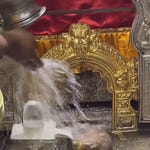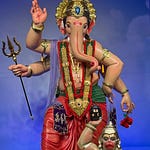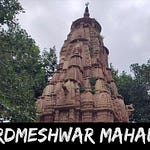Nestled in the heart of the Himalayas, overlooking the tranquil valley of Pokhara, lies a spiritual marvel that has swiftly become a revered destination for devotees and travelers alike — the Mahadev Statue at Pumdikot. Rising with majestic grace, the grand idol of Lord Shiva, known lovingly as Mahadev, is not just a visual spectacle but a soul-stirring spiritual experience. It invites you not merely for a visit, but for a profound inner journey.
The Origin and Vision Behind Pumdikot Mahadev Statue
The sacred site of Pumdikot derives its name from its hilltop location in the Pumdi-Bhumdi area of Pokhara Metropolitan City in Nepal. This region, already revered for its natural beauty and panoramic views of the Annapurna range, gained divine prominence with the conceptualization and creation of one of Nepal's tallest Shiva statues.
The idea was envisioned to complement the spiritual importance of Pokhara and to provide a destination that not only attracts tourists but offers a center of devotion, meditation, and pilgrimage for Hindu believers. The foundation stone of this project was laid in the early 2010s, with work actively starting around 2018. The project was led by local community leaders and spiritual groups, inspired by Nepal’s rich Shaivite traditions.
Timeline and Construction
2018: Construction of the pedestal and base begins.
2019–2020: Major work on the statue’s framework and internal structure takes place.
2021: The final outer carving and embellishments are completed.
2022: The statue is officially opened to the public, marking its emergence as one of Pokhara’s prime spiritual destinations.
The statue stands approximately 108 feet tall, a sacred number in Hindu dharma, representing cosmic completeness. It is positioned strategically to face the north — symbolizing the direction of Kailash, the mythical abode of Lord Shiva.
Architectural Significance and Symbolism
Every detail of the Mahadev Statue at Pumdikot carries deep spiritual meaning:
Trident (Trishul): Represents the trinity of creation, preservation, and destruction.
Snake (Vasuki): Symbolizes control over fear, time, and death.
Crescent Moon: Denotes Shiva as the controller of time and the master of change.
River Ganga flowing from hair locks: Symbolizes purity and spiritual descent into the material world.
Surrounding the statue is a Shivalinga-shaped base, with 108 Shivalings placed in a circle, allowing devotees to perform parikrama (circumambulation) as a ritual of surrender and reverence.
Religious Importance and Devotee Significance
Lord Shiva, in Sanatan Dharma, is considered the destroyer of evil and ego, the protector of truth, and the god of meditation and asceticism. For millions, He represents the inner self and consciousness — formless, infinite, and eternal.
Visiting Pumdikot Mahadev is not just a trip; for devotees, it’s:
A spiritual cleanse, where one releases ego and impurities.
A moment of inner silence, akin to meditating in Shiva’s own lap.
A place to make vows, seek blessings for healing, clarity, and strength.
An expression of gratitude and bhakti (devotion).
Many devotees believe that praying here, especially during Mahashivratri, Shravan Maas, and Pradosh Vrat, grants spiritual breakthroughs and fulfillment of heartfelt wishes.
Puja and Rituals at Pumdikot
While daily pujas and maintenance are overseen by temple priests, visitors can perform the following rituals:
Abhishekam (Water Offering): Pouring pure water or milk on a Shivalinga.
Pradakshina (Circumambulation): Walking around the 108 Shivalings in reverence.
Japa Meditation: Chanting “Om Namah Shivaya” silently or with a rosary.
Offering Bel Leaves and Datura Flowers: Sacred to Lord Shiva.
Lighting Diyas and Incense: Symbolizing inner light and purity.
Special ceremonies are organized on:
Mahashivratri (The Great Night of Shiva)
Teej Festival (especially for women seeking blessings for marital harmony)
Full Moon Days (Purnima)
What to Do When Visiting
Meditate at Sunrise or Sunset: These hours provide deep serenity, perfect for Shiva consciousness.
Walk the Prayer Path: Circumambulate the statue, repeating mantras.
Engage with Local Devotees: Share spiritual stories, songs, and blessings.
Offer Prasad: Fruits, milk, or sweets to be distributed among visitors.
Photograph Respectfully: Capture the divine essence without disturbing rituals.
What Not to Do
Do not wear revealing or inappropriate attire. The space is sacred, and modesty is expected.
Avoid loud behavior or phone use near the sanctum. Respect the meditative environment.
Do not litter. Keep the space clean and spiritually vibrant.
Refrain from climbing structures or statues. These are divine symbols, not monuments for recreation.
Do not carry non-vegetarian food, tobacco, or alcohol. These are prohibited in holy places.
Best Time to Visit
While the statue and complex are open year-round, the best times to visit are:
October to April: Clear skies offer breathtaking Himalayan views.
Mahashivratri Festival (Feb–Mar): Grand celebrations with lamps, music, and mass prayers.
Early Morning or Late Afternoon: Avoid harsh midday sun and experience peaceful ambiance.
Travel Guide and Access
Location: Pumdikot Hilltop, Pumdi-Bhumdi, Pokhara, Nepal
From Pokhara City: ~10–12 km; 30-minute drive
Route: Drive to World Peace Pagoda, then follow signs to Pumdikot.
Transport Options: Local taxis, bike rentals, or guided tours.
Trekking Option: For adventure seekers, a hiking route through lush forest trails offers a deeply immersive pilgrimage walk.
There are small shops and tea stalls at the base. A few local ashrams also offer accommodation and meals for pilgrims.
Mystical and Spiritual Stories
Many locals believe that on certain nights — especially Shivratri and Amavasya — the air around Pumdikot carries heavenly fragrance and a mystical glow. Some have claimed visions of Jyoti Lingas or glowing orbs in meditative states.
The hilltop is said to be located on a spiritually active leyline, enhancing the potency of prayers and meditations offered there.
The Glory of Pumdikot: A Beacon of Modern Faith
While ancient temples across India and Nepal speak of centuries-old devotion, Pumdikot represents a new yet deeply rooted spiritual resurgence. It bridges tradition with modernity — showing that devotion still thrives in the hearts of the youth, artists, architects, and believers who built this monumental space.
It’s a living temple, growing in fame and sanctity every day. It reminds us that wherever Mahadev is called upon with sincerity, He manifests in infinite forms — whether in the mountains of Kailash or the hills of Pokhara.
Why Every Devotee Must Visit
For a spiritual seeker, Pumdikot is a soul-soothing retreat. For a pilgrim, it’s a dream fulfilled. For a devotee of Shiva, it is nothing less than a physical gateway to His divine presence.
Amid the clouds and silence of Pokhara’s highlands, where the winds whisper mantras and the sky bows down in reverence, Mahadev sits — eternal, compassionate, mighty.
Come here not just to see — but to feel. To let go, to awaken, to return stronger.
Har Har Mahadev!









